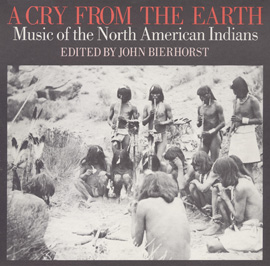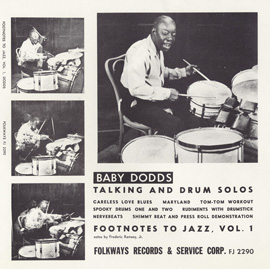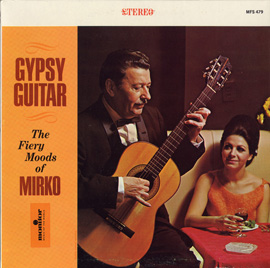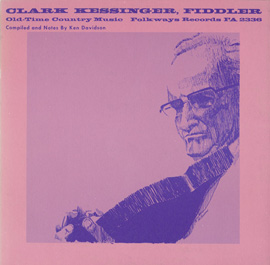Summary
This lesson plan explores the life and music of the Pueblo people of the Zuni in the New Mexico region of North America. Colorful and rich in artistic skills, the Zuni bring joyous communal and personal music-making to life.
Suggested Grade Levels: 3-5
Country: North America
Region: Southwest
Culture Group: Zuni
Genre: Folk Music
Instruments: Voice, Gourds, Drum
Language: Zuni
Co-Curricular Areas: American History, Cultural Rituals and Ceremonies
National Standards: 1, 2, 3, 4, 5, 6, 8, 9
Prerequisites:
- Performing a steady beat
- Writing quarter and eighth notes
- (Historical knowledge of Native Americans in American colonial and westward expansion is helpful but not required)
Objectives:
- Students will be able to notate and perform heard rhythm patterns in compound meter
- Students will be able to sing a Zuni lullaby using their head voices and compose an accompaniment on pitched or non-pitched instruments.
- Students will be able to describe the musical characteristics of Zuni selections
- Students will be able to perform a Harvest Dance and improvise appropriate dance movements
- Students will describe ceremonial music and songs that express beliefs in their own cultures
- Students will compose a new piece of music using contrasting sections with introduction and bridges.
Material:
- Zuni Harvest Dance
- Zuni Emergence Song
- Zuni Rainbow Dance
- Courting Flute Song
- Zuni Lullaby (Track 201, sung by Laughing Eyes Margaret Eagle)
- Extension music: Zuni Rain Dance
- Written staff on board or poster
- Board space or posters with notation (below, lesson 1) & lyrics (below, lesson 3)
- Gourds (or maracas), rattles
- Hand drum
- Space to make a double line and circle with class
Lesson Segments:
- Singing and Dancing in the Harvest (National Standards 1, 2, 5, 6, 8, 9)
- Zuni Beliefs and Ceremonies (National Standards 4, 6, 8)
- Courtship and Lullabies (National Standards 1, 2, 4, 6, 8)
Lesson Segment 1: Singing and Dancing in the Harvest
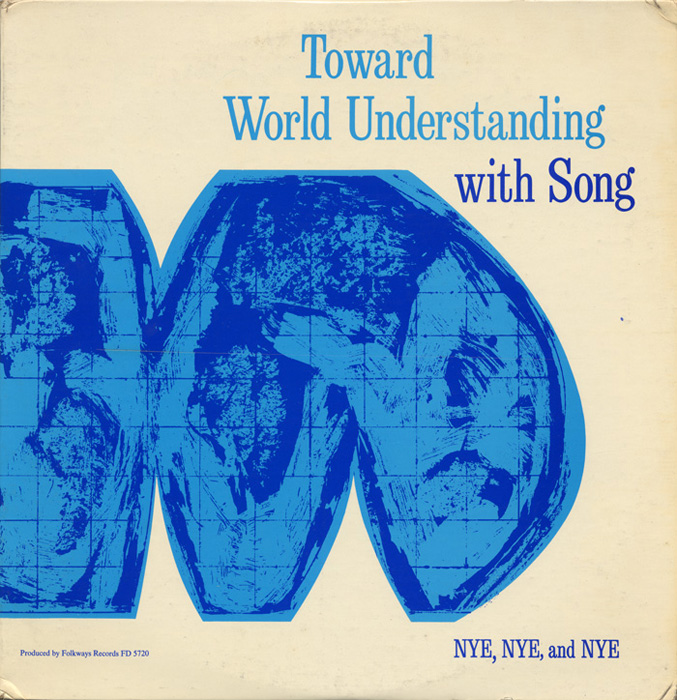
“Zuñi Harvest Dance”
from Toward World Understanding with Song (1966) | FW05720
- Ask students to listen to the first 30 seconds of a song from North America (Zuni Harvest Dance), and ask them to keep the beat of the drum with their fingertips on their laps.
- Play the first 46 seconds of the song this time, splitting the students into three groups beforehand and assigning each group to answer one of the following questions:
- Who is singing? (men, Native Americans)
- Can you decide whether the tempo is a walking beat, a running beat, or a heartbeat? (heartbeat)
- Where might this song be sung, and what might be its purpose? (a dancing song, a festival)
- Collect answers and write on the board (or poster paper)
- Have students listen again to the first 46 seconds again, asking beforehand to perform the rhythm pattern. After listening and performing the pattern, ask them to figure out how to notate this rhythm pattern (quarter-eighth). Collect answers and write three patterns on board (with repeat signs).
(starting after the first 2 seconds) : ♩ ♪ : - Explain that the song comes from the Pueblo People of the Zuni. Show map:

picture from A Cry from the Earth: Music Of North American Indians Liner Notes
The pueblo people of Zuni have lived in the Southwest region of the country, now New Mexico, for over 1200 years. Their cultural heritage is rich with traditions. The culture is built upon farming (corn, cotton, beans, and squash are popular crops) and the Zuni people historically lived in multi-storied terraced community houses. Show a picture of a Zuni girl carrying water and notice the home behind her.

Picture and information from Music of the American Indians of the Southwest Liner Notes
All of the Pueblo tribes are known for beautiful arts and craftsmanship, and for their festivals that celebrate many aspects of their lives. One special occasion was a Festival for the Harvest, held in August of each year when people have brought in their crops. People gather for a festival and talk about how they grew their crops and how successful their gardens were. To celebrate the success of the crops they dance this social dance with singing, drums, and gourds.
Note: In order for a boy to receive a gourd he had to be well behaved and obedient - responsible and helpful to parents. When parents felt their son has lived up to this, they told the elders that they wanted a gourd made for their son.1
- Explain that many ceremonial songs use vocables, or nonsense syllables, instead of words. Practice the vocables in this piece.
- Show score and listen to the first two measures. Have students find the Introduction in the score and learn to perform this. Teach the term “Introduction.”
- Show music and listen once more - ask students to find where there are large leaps in the voice part (start of section A). Practice the leap from D-flat to E-flat an octave higher. Have students explore vocally how to produce the trill on the high E-flat.

- Sing through Section A and section B.
- Practice singing the third measure, modeling for students and then having them echo.
- Have students find the third measure (the beginning of Section A) on the score. Looking at measure 4, ask students to read and sing the rest of the phrase (note: the students should already have heard the song several times, so this will be accessible to them). Sing Section A several times, exploring how to find the trill (or “pulsation”2) on the first note of each sub-phrase (also the long note of each phrase).
- Repeat this procedure for Section B.
- Listen to Section C (not notated, this section is repeated 3 times starting at 1’28” and ends the song), asking students to keep the pulse with their fingers on laps. Before listening, ask students to decide what changes in the speed of the beat and the pattern. (the music speeds up and the pattern becomes a quarter pulse with eighth notes heard lightly under the drum)
- Learn the harvest dance:
- All students can have a gourd to play (in the notat4ed rhythm pattern) as they dance. All students in two lines facing each other (these are partners). As music begins, all dancers follow heartbeat pattern with feet (step left-left, right-right) and continue through song.
- Partners at the head of the line turn and dance around to their left side - everyone follows line leaders. Leaders walk around and go around until everyone has returned to original places.
- Leaders turn and dance around to their right side (same as before).
- When all have returned to original places, partners come to the middle, facing each other and shake gourds on a trill for a beat, then all back up to original places once more while keeping the notated rhythm once more.
- Have students decide on additional movements that could be done in pairs in the line (i.e., turning right and left, trading places, etc.) for Section C. Ask: “With tempo and rhythm changes, should we use the same movements, or should we change the shape of the group (to a circle, to pairs closer, to one line?) (note: there is no one correct answer, so let the students brainstorm!).
- Perform the dance (and notated rhythm pattern on gourds (Perhaps have one student play the drum without dancing) with the recording. If time permits, split into singing group and dancing group and perform the whole song!
Extension (Optional):
- Discuss how other cultures celebrate harvest times (i.e., Thanksgiving)
- Discuss the students’ cultural heritages, and what they know about the music of these cultures.
- Attend a local harvest festival or celebration; Bring in a culture bearer and create a school harvest festival; Watch a video of a modern day harvest festival
Assessment: Did the students notate and perform the rhythm pattern accurately? Did the students Sing the notated song with pulsation on the first notes of each phrase, and sing accurately? Did the students create improvised dance steps for Section C that fit the dance steps for the first two sections? Did the students keep the pulse while dancing?
Lesson Segment 2: Zuni Beliefs and Ceremonies

“Zuni Emergence Song”
from Songs and Stories from Grand Canyon (2005) | SFW40167
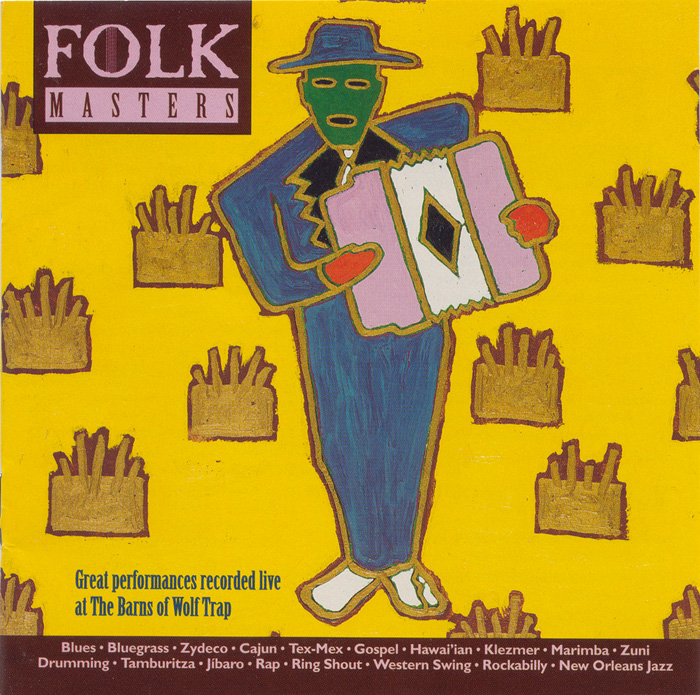
“Zuni Rainbow Dance”
from Folk Masters: Great Performances Recorded Live at the Barns of Wolf Trap (1993) | SFW40047
- Play recording of the introduction section (until 20 seconds) of the “Zuni Emergence Song”.
- Ask students to describe what the singer/composer is communicating about his Zuni culture. (shared history, pride, community, etc.)
- Play recording again and have students keep the pulse with their fingers on their laps.
- Explain that the Zuni and the Hopi peoples are believed to be descendants of the Anasazi, or “The Old Ones.” In the Zuni Emergence tale, the people first lived deep in the ground, in a place with no light they called the Fourth World. The creator Awonawilona took pity upon them and identified two brothers to lead the people out into the light. In the first world, they traveled to where insects emerged from the ground. In the second, they evolved into mammals; dogs and bears, for example. In the third, they took the form of human beings.
- Ask students, “How do their different beliefs about the emergence of life compare and contrast with the Zuni beliefs?”
- Explain that music is often used to pass down beliefs and stories from one generation to another. Sometimes, music created for this purpose can be performed for enjoyment as well. This next song is a good example. The Zuni Rainbow Dance was probably originally a ceremony to ask for rain, but now is performed in concerts and for tourists.
- Have students discuss the following questions:
- What music do we have that is used just to show who we are to tourists or visitors?
- Do we have any ceremonies or places that are set aside for tourists to experience?”
- Do you know of songs from other cultures that tell stories? Do these songs say anything about what people in that culture believe about the world?
- Listen to the “Zuni Rainbow Dance” from beginning to 28 seconds, keeping the pulse with fingers on laps.
- Ask afterward “What did you notice about the drum and rattle accompaniment at the end of each phrase?” (accompaniment paused at the end of each phrase).

picture from Folk Masters: Great Performances Recorded Live at the Barns of Wolf Trap liner Notes
- Write Form Chart (below) on board, or ask students to help you write the form as you listen.
FORM CHART
| Introduction | A | Bridge | BB’ | Bridge | BB’ | Bridge | BB’ |
| (faster) | (higher) | (higher) |
| Introduction | A | Bridge | BB’ | Bridge | BB’ | Bridge | BB’ |
| (faster) | (higher) | (higher) |
- Explain that A, B, and B’ are sections in the music and that the introduction and bridges take the listener from one section to another.
- Listen and track the music on the form chart, and ask students to figure out why B’ is slightly different than B (the accompanying rhythm changes).
- Listen once more, and ask students to fill in the blanks under each bridge section.
- Listen once again and lightly tap the accompanying rhythm with each section.
- In groups, compose a song (on vocables) that follows the same form as the Rainbow Dance. Groups can decide if the bridge will lead to faster, slower, higher, or lower. Perform new songs for each other.
Assessment: Did the students fill in the chart correctly? Were they able to perform the accompaniment to the Rainbow Dance accurately? Did the group compositions accurately follow the form chart?
Lesson Segment 3: Zuni Courtship and Lullabies

“Courting Flute Song”
from Music of New Mexico: Native American Traditions (1992) | SFW40408

“Zuni Lullaby”
from Cry from the Earth: Music of the North American Indians (1979) | FW37777
- Play recording of the Courting Flute Song, but do not tell the students the title of the song.
- Ask students the following questions:
- What instrument do you hear?
- What do you think this music is about?
- Take answers after first listening, then tell students the title: Courting Flute Song. Explain that it was common among all the Pueblo men to use flutes to court the women they hoped to marry.
- Listen again, and ask students to describe characteristics of this music that suggest love (this is an open-ended question).
- Ask students to think about any instruments in our culture that are used to symbolize love, any why (this is an open-ended question).
- Similar to courting songs, lullabies are gentle and express love. Play recording of the Zuni Lullaby (Track 201, sung by Laughing Eyes Margaret Eagle).
- Ask students, “In what ways is this melody similar to the courting song?” (not a strong pulse, large melodic leaps, quiet, etc.).
- Write the words on the board, phrase by phrase. Ask students to listen again, raising hands at the end of each line.
Hey nii-a, hey-nah, Hey nii-a, hey-nah,
O-ah nah ni-wi-na lah, o-wiia-ney
Hey nii-a, hey-nah, Hey nii-a, hey-nah,
O-o-ah a-ye-heh, ah-ha-ah3.
- Explain: The Zuni baby lies in his cradle, tightly covered, with his arms straight at his sides. Sometimes ropes are attached to each end and the cradle is swung between a pair of posts. As the mother swings the cradle, she sings her baby to sleep.
- In what ways is this lullaby like lullabies in other cultures? (Lullabies are filled with vocables such as “lu-la-ley,” and they are often sung with higher pitch, often without accompaniment, etc.)
- Have students listen the recording again and repeat as necessary so that the students can learn to sing along with the song.
Extension: As a class, develop some instrumental accompaniment for the song on non-pitched instruments. This could include introductions, repeating the song with bridges in between, or instrument sounds underneath the singing. Perform as a class.
Assessment: Are the students singing in their head voices, and singing the correct pitches of the song? Were they able to describe similarities between the Zuni lullaby and other cultures’ lullabies?
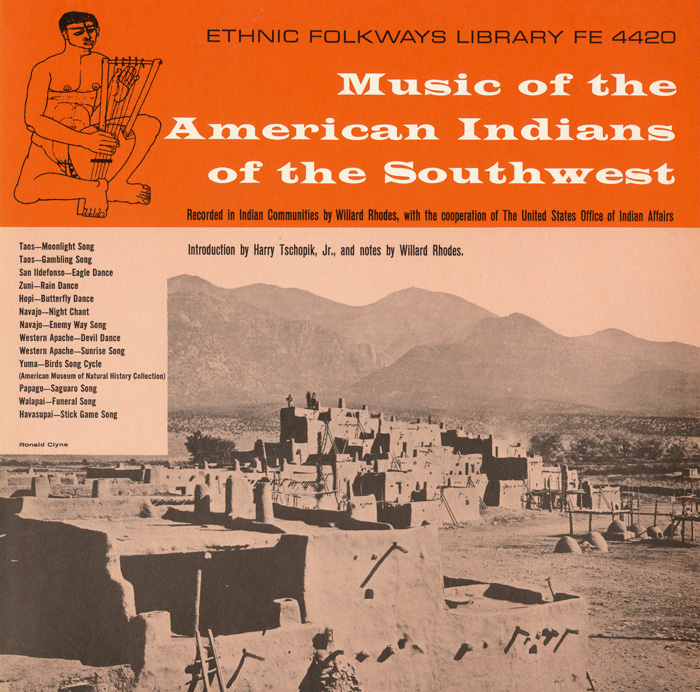
“Zuni Rain Dance”
from Music of the American Indians of the Southwest (1951) | FW04420
1 For more information on the Zuni Harvest Dance, see PBS Teachers - Zuni Harvest Dance (downloadable short video)
2 For more information on western Pueblo Tribe vocal technique, see Bruno Nettl: “North American Indian Musical Styles” The Journal of American Folklore, Vol. 67, No. 266 (Oct. - Dec., 1954), pp. 351-368.
3 There is no information in the liner notes about the song lyrics. It is unclear whether the words have meaning or if they are vocables, although it may be that the first phrase “hey nii-ah, hey nah” is made of vocables.






